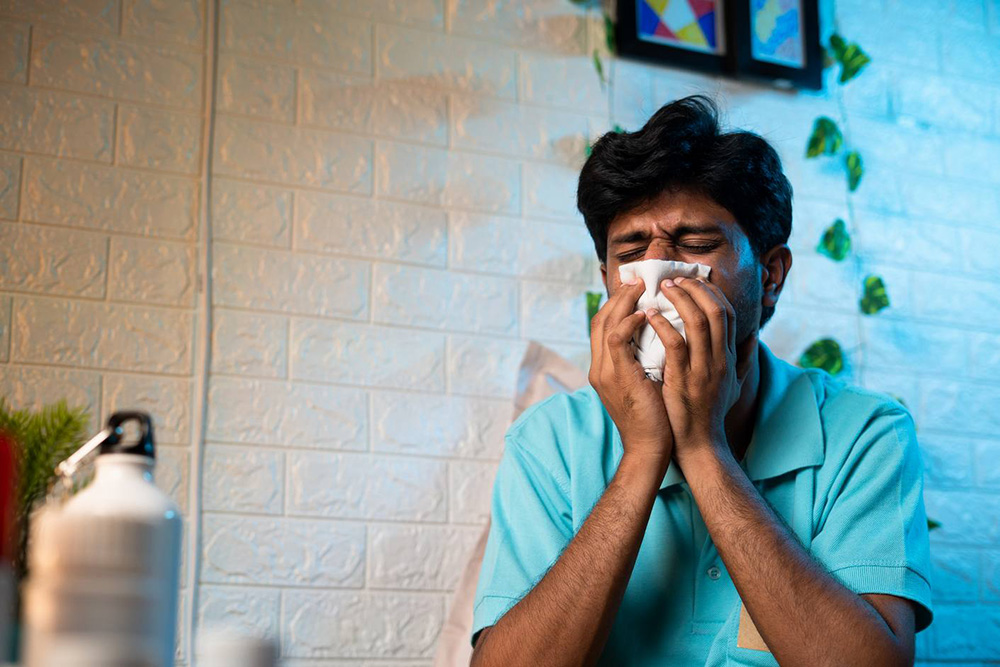
Discover India’s indoor air quality challenges during the winter season, the pollution impacts on health, and solutions to improve IAQ for a healthier environment.
India’s winter season, combined with the Diwali celebrations, often leads to a noticeable spike in air pollution, which impacts both the air outside and indoors. During this time, cities experience higher pollution levels due to factors like emissions from factories, vehicle exhaust, Dust emission, crop burning, and additional emission load during Diwali fireworks. These activities release large amounts of harmful particles and gases into the air, such as particulate matter (PM10 and PM2.5), nitrogen oxides (NOx), sulfur oxides (SO2), ozone (O₃), carbon monoxide (CO), and volatile organic compounds (VOCs). This pollution doesn’t just stay outdoors; it seeps into homes, offices, and other buildings, making indoor air quality a major health concern. Doors, windows, and ventilation systems allow outdoor pollutants to enter, often creating indoor pollution levels that are as high as those outside, especially in urban areas. Both ambient and indoor air pollution reveals a complex relationship that places residents at risk of exposure to harmful pollutants, leading to respiratory issues such as inflammation, asthma exacerbation, chronic lung disease, and increased infections, as well as cardiovascular risks including hypertension, atherosclerosis, heart arrhythmias, and heightened risk of heart attacks and strokes. People with pre-existing conditions are at even higher risk.
Hidden health hazards of indoor air pollution in urban areas
Indoor air pollution causes unique health challenges, especially in urban areas during winter. Fine particles from outdoor sources can easily enter indoor spaces, making ambient air pollution primarily responsible for poor indoor air quality. Although urban buildings often have controlled ventilation and HVAC systems, research by TERI (The Energy and Resources Institute) has found that even well-maintained corporate offices can have PM10 and PM2.5 levels that exceed WHO’s safe limits. Small particles like PM2.5 are especially dangerous because they can reach deep into the lungs and even the bloodstream, worsening respiratory conditions like asthma and raising the risk of heart disease. The WHO advises that PM2.5 levels stay below 10µg/m³ annually and 25µg/m³ over 24 hours, while PM10 should not exceed 20µg/m³ annually and 50µg/m³ in 24 hours. However, during winter months, indoor particulate levels in urban areas often surpass these limits due to the infiltration of outdoor pollution. According to monitoring stations data (CPCB), gaseous pollutants in ambient air generally remain below NAAQS standards, and TERI studies have shown that indoor levels of these pollutants often fall below detectable limits. As a result, in urban areas where buildings have good HVAC systems, gaseous pollutants are not a significant concern.
Rural IAQ challenges owing to biomass fuels and improper ventilation
In contrast, rural areas face an even more challenging indoor air quality (IAQ) situation due to traditional cooking and heating practices. Many rural households rely on biomass fuels such as firewood and crop residue for cooking, which releases fine particulate matter and gases like CO, SO2 and NOX. These pollutants accumulate in the air due to limited ventilation, creating hazardous indoor environments that regularly surpass recommended air quality limits. Women and children, who typically spend the most time in cooking areas, are especially vulnerable to the effects of this indoor pollution. TERI’s studies indicate that biomass combustion in rural households can lead to PM2.5 and PM10 levels far above WHO standards, presenting significant health risks. Moreover, gaseous pollutants like CO, SO2 and NOX can reach dangerously high concentrations, particularly in poorly ventilated homes, exacerbating respiratory issues and increasing the likelihood of cardiovascular conditions. This complex contrast in IAQ between urban and rural areas illustrates the varied sources and types of pollution that challenge health and well-being across India.
Divergent indoor air quality challenges in urban and rural India
Efforts to improve IAQ in both urban and rural settings require a combination of technological advancements and behavioural shifts. Enhancing ventilation systems in urban buildings, particularly through high-quality HVAC systems, can prevent the infiltration of outdoor particulate matters. During high pollution periods, such as Diwali and winter, advanced air filtration systems can play a vital role in reducing the impact of ambient pollution indoors, maintaining healthier indoor spaces. In rural areas, a shift towards cleaner cooking practices is crucial for reducing indoor pollution levels. Switching from biomass fuels to cleaner alternatives, such as liquefied petroleum gas (LPG) or improved biomass stoves with ventilation can significantly decrease indoor pollution and its associated health risks. Additionally, increasing public awareness about the importance of IAQ can empower people to make healthier choices, such as cleaner cooking practices and improving home ventilation. As outdoor pollution seeps into indoor spaces and rural homes continue to face indoor pollution sources, effective solutions require teamwork across technology, policy, and public awareness to create healthier indoor environments for both city and rural communities.
